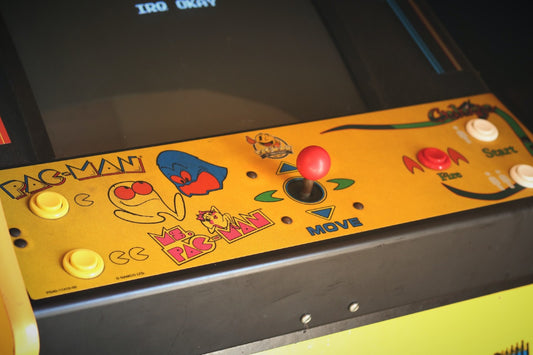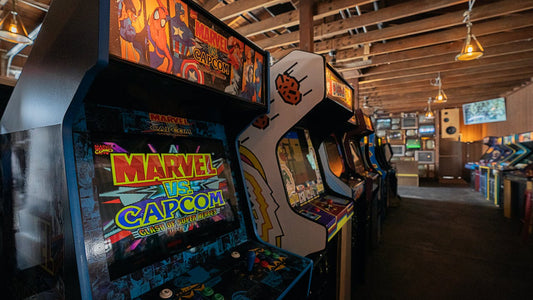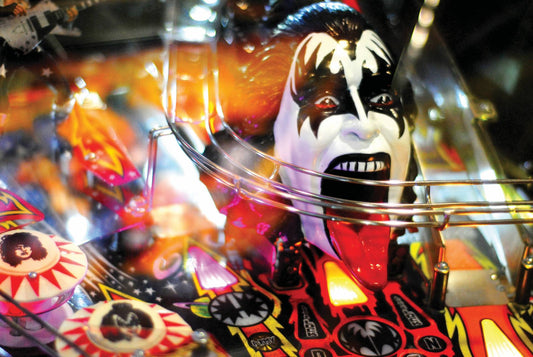Scramble + Jump Bug | Early Arcade History 1981
By 1981, the popularity of arcade cabinets was in a boom cycle. In this year some huge titles were created, such as Donkey Kong, Galaga and Frogger. All of which are prided as some of the most beloved retro games to date. Game development went further in this year, as Donkey Kong set out a template for platform games, adding a level of fame to this previously overlooked genre of games. Also within this year, the first game to have a ‘continue’ feature was developed.
Scramble (1981)
Konami released Scramble, a side-scrolling shooter, in 1981. The game was innovative in design as the player found themselves in various terrains, and followed a progressive journey within the gameplay. Players’ controlled a jet that had to infiltrate different areas that were all leading to a Base. The aim of the game was to battle through the other areas to destroy the base, giving the title a narrative form.
The Jet was armed with a forward firing weapon and bombs, with each weapon having its individual button. Scramble used a fuel-based system, with the player having to strategically destroy fuel tanks in the game to replenish their fuel supply.
The side-scrolling terrain created obstacles for the player, having to avoid the different levels of landscape, as it dramatically rose and fell across areas. Within this, there were six different landscapes. The first was a hilly terrain, rendering the player to dodge enemy fire and shoot enemies who laid low on the ground. The second level presented itself as a cavern. Hordes of swarming enemies increased the difficulty when it came down to manoeuvring in this section. After the player had escaped the cavern, upon exit, were confronted with a wave of fireballs for a third level. The assaulting fireballs appeared fast and upon attack were indestructible. Which required the player to dodge the oncoming wave of fireballs. The next level produced a city view, where the player flew the jet over a metropolis. Missiles were shot up from this level and the tops of large skyscrapers became a threat to the player. The penultimate of the six terrains presented tight machine tunnels, the player having to carefully fly the jet through. Finally, the player made an attack on the base. Once the player had defeated the base, a flag denoting a completed mission sign appeared on the screen and the game would begin again, only this time the level of difficulty increased.
The scoring system on the game worked on multiple levels. 10 points were given per second that the jet is in play. The enemy ships and fuel tanks also gave out points. Rockets gained the player either 50 points (if on the ground) or 80 points (if in the air), UFOs being worth 100 points to the player, a further 150 points being awarded for fuel tanks. Mystery targets gave the player 100, 200 or 300 points per hit. The player will earned an extra life after gaining 10,000 points.
The game was a success upon release, selling 15,136 cabinets in America within five months. The game prided itself on becoming Stern’s second best-selling game after Berzerk.
Jump Bug (1981)
Alpha Denshi’s Jump Bug was the first platform game to include smooth, horizontal and vertical scrolling. In this game, the player controlled a white car, which bounced whilst navigating through various environments, which include a metropolis, pyramids and even underwater. The unique point of this game was the fact that the character was constantly jumping throughout the gameplay. The player could also control both the speed and height of the jump with the up and down keys on the cabinet. Players also had the ability to shoot a variety of enemies, which also happened to be one of the various ways to collect points. Other methods included collecting treasure throughout the different environments and also jumping on clouds.



